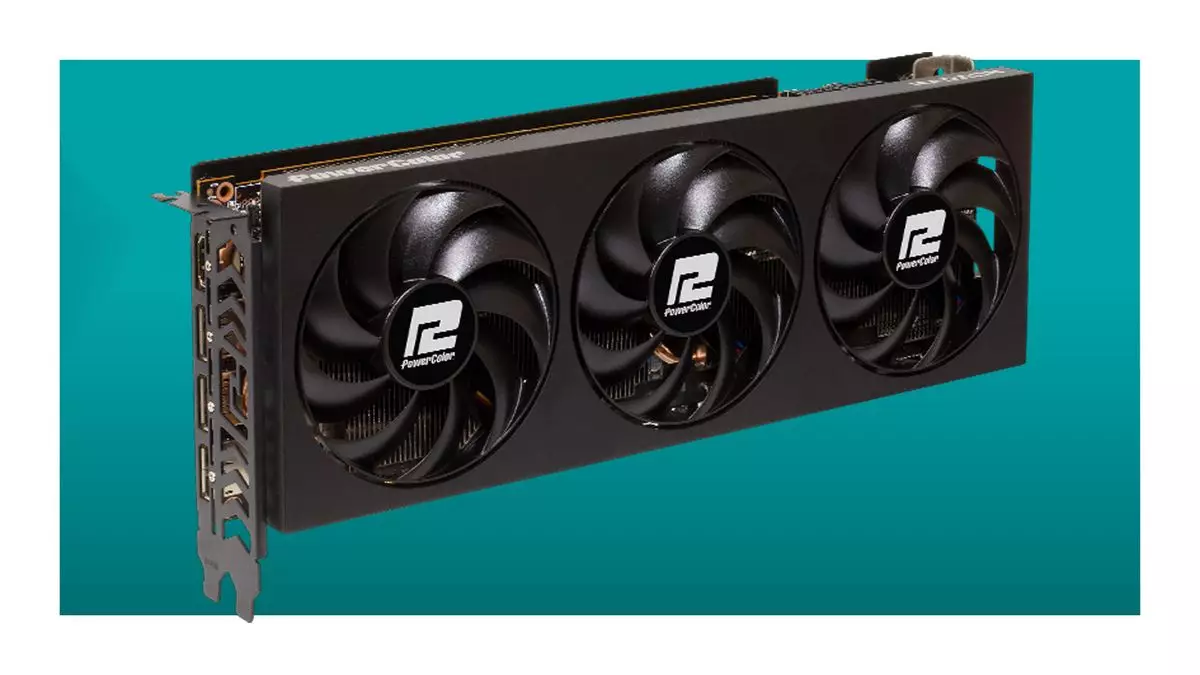In the ever-evolving realm of computer graphics, few manufacturers have made as significant an impact as AMD. The Radeon RX 7700 XT has recently grabbed headlines—not purely for its capabilities but rather for its incredible transformation in pricing. Launched at a stark $449, the RX 7700 XT was, to put it bluntly, overpriced relative to its peers. However, in typical AMD fashion, that price point has now dropped to an attractive $350, making it an enticing option for gamers and professionals looking for a robust graphics card without breaking the bank.
The RX 7700 XT was always framed as a strong contender in the 1440p GPU market. But at launch, this potential was overshadowed by its price in comparison to the higher-performing RX 7800 XT. Fast forward to today, and with the considerable price reduction—coupled with additional incentives like two free games—the RX 7700 XT represents not just value but an immediate bargain for those looking to upgrade their gaming setup.
When examining the RX 7700 XT’s performance, particularly against competing GPUs, it’s essential to note the specificity of use cases. While it carries a commendable 12 GB of VRAM, the RX 7700 XT has shown slightly inferior ray tracing capabilities compared to NVIDIA’s offerings, particularly the RTX 4070. This performance gap widens when ray tracing is enabled, a feature that is becoming increasingly important for next-generation gaming. While the RX 7700 XT may fall short in this area, the substantial price difference of around $200 more affordable than the RTX 4070 works significantly in AMD’s favor.
Moreover, the RX 7700 XT often eclipses the performance of NVIDIA’s RTX 4060 Ti, making it a smart choice for gamers looking for performance without the premium costs associated with NVIDIA’s lineup. Such details indicate a shift in the landscape, as AMD effectively positions itself as a value-driven alternative to its competitor.
Of ultimate importance here are the added incentives that AMD has included with the RX 7700 XT purchase—namely, the two free games, Warhammer 40,000: Space Marine 2 and Unknown 9: Awakening. AMD has a long-standing tradition of offering bundled games with their graphics cards, transforming what may otherwise be just another purchase into an opportunity for enhanced gaming experiences.
For instance, Warhammer 40,000: Space Marine 2, a game priced at $60, can serve as an attractive proposition on its own, and when bundled with a discounted GPU, it elevates the overall purchase value significantly. On the other hand, Unknown 9: Awakening offers a fresh, engaging experience for gamers looking to explore new narratives and gameplay styles, enhancing the appeal of AMD’s graphics card offering.
In the competitive arena of GPU purchases, consumers are frequently faced with the dilemma of performance versus price. The RX 7700 XT serves as an example of how strategic pricing adjustments can drive consumer interest, but it also raises questions about the pricing strategies of GPU manufacturers. As newer models are released, it is likely that we will see further fluctuations in this space. However, for the moment, the RX 7700 XT stands as a beacon of value.
AMD’s marketing tactics, particularly their bundled games, may also signal a trend where graphics card sales hinge less on specifications and more on the total package offered. Consumers today are savvy, seeking maximum return on their investment, and it seems AMD is starting to understand how to cater to that demographic effectively.
While the RX 7700 XT faced initial challenges due to its pricing at launch, its current positioning as a $350 graphics card, especially when paired with valuable bundled games, makes it an appealing choice for a variety of users. With commendable performance at an attractive price, AMD is not just selling a product; they are selling a well-rounded gaming experience that few can resist.


Leave a Reply